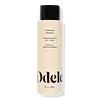What's inside
What's inside
 Key Ingredients
Key Ingredients

No key ingredients
 Benefits
Benefits

 Concerns
Concerns

 Ingredients Side-by-side
Ingredients Side-by-side

Water
Skin ConditioningSodium C14-16 Olefin Sulfonate
CleansingCocamidopropyl Betaine
CleansingAcrylates Copolymer
Glycol Stearate
EmollientSea Water
HumectantSarcosine
Skin ConditioningRice Amino Acids
Skin ConditioningLactobacillus/Date Fruit Ferment Extract
HumectantBiotin
AntiseborrhoeicCoriandrum Sativum Fruit Oil
MaskingSalvia Hispanica Seed Oil
MoisturisingTerminalia Ferdinandiana Seed Oil
AntioxidantTocopherol
AntioxidantCarthamus Tinctorius Seed Oil
MaskingLeuconostoc/Radish Root Ferment Filtrate
AntimicrobialGlycerin
HumectantPanthenol
Skin ConditioningHydrolyzed Pea Protein
EmollientPhenoxyethanol
PreservativeButylene Glycol
HumectantTetrahexyldecyl Ascorbate
AntioxidantEthyltrimonium Chloride Methacrylate/Hydrolyzed Wheat Protein Copolymer
Cocamide Mipa
EmulsifyingPolyquaternium-10
Caprylyl Glycol
EmollientPotassium Sorbate
PreservativeEthylhexylglycerin
Skin ConditioningDisodium EDTA
Sodium Benzoate
MaskingPolyquaternium-11
Cetearamidoethyldiethonium Succinoyl Hydrolyzed Pea Protein
CleansingWheat Amino Acids
Skin ConditioningIsopropanolamine
BufferingSodium Acetate
BufferingIsopropyl Alcohol
SolventPEG-12 Dimethicone
Skin ConditioningPolyperfluoroethoxymethoxy Difluoroethyl PEG Phosphate
Skin ConditioningParfum
MaskingWater, Sodium C14-16 Olefin Sulfonate, Cocamidopropyl Betaine, Acrylates Copolymer, Glycol Stearate, Sea Water, Sarcosine, Rice Amino Acids, Lactobacillus/Date Fruit Ferment Extract, Biotin, Coriandrum Sativum Fruit Oil, Salvia Hispanica Seed Oil, Terminalia Ferdinandiana Seed Oil, Tocopherol, Carthamus Tinctorius Seed Oil, Leuconostoc/Radish Root Ferment Filtrate, Glycerin, Panthenol, Hydrolyzed Pea Protein, Phenoxyethanol, Butylene Glycol, Tetrahexyldecyl Ascorbate, Ethyltrimonium Chloride Methacrylate/Hydrolyzed Wheat Protein Copolymer, Cocamide Mipa, Polyquaternium-10, Caprylyl Glycol, Potassium Sorbate, Ethylhexylglycerin, Disodium EDTA, Sodium Benzoate, Polyquaternium-11, Cetearamidoethyldiethonium Succinoyl Hydrolyzed Pea Protein, Wheat Amino Acids, Isopropanolamine, Sodium Acetate, Isopropyl Alcohol, PEG-12 Dimethicone, Polyperfluoroethoxymethoxy Difluoroethyl PEG Phosphate, Parfum
Water
Skin ConditioningSodium C14-16 Olefin Sulfonate
CleansingCocamidopropyl Hydroxysultaine
CleansingDimethyl Lauramide/Myristamide
EmulsifyingParfum
MaskingAmaranthus Caudatus Seed Extract
Skin ConditioningHydrolyzed Rice Protein
Skin ConditioningPropanediol
SolventCetrimonium Chloride
AntimicrobialPolyquaternium-10
Sodium Methyl 2-Sulfolaurate
CleansingDisodium 2-Sulfolaurate
CleansingHydroxypropyl Guar Hydroxypropyltrimonium Chloride
Citric Acid
BufferingSodium Chloride
MaskingSodium Benzoate
MaskingPotassium Sorbate
PreservativeWater, Sodium C14-16 Olefin Sulfonate, Cocamidopropyl Hydroxysultaine, Dimethyl Lauramide/Myristamide, Parfum, Amaranthus Caudatus Seed Extract, Hydrolyzed Rice Protein, Propanediol, Cetrimonium Chloride, Polyquaternium-10, Sodium Methyl 2-Sulfolaurate, Disodium 2-Sulfolaurate, Hydroxypropyl Guar Hydroxypropyltrimonium Chloride, Citric Acid, Sodium Chloride, Sodium Benzoate, Potassium Sorbate
Ingredients Explained
These ingredients are found in both products.
Ingredients higher up in an ingredient list are typically present in a larger amount.
Parfum is a catch-all term for an ingredient or more that is used to give a scent to products.
Also called "fragrance", this ingredient can be a blend of hundreds of chemicals or plant oils. This means every product with "fragrance" or "parfum" in the ingredients list is a different mixture.
For instance, Habanolide is a proprietary trade name for a specific aroma chemical. When used as a fragrance ingredient in cosmetics, most aroma chemicals fall under the broad labeling category of “FRAGRANCE” or “PARFUM” according to EU and US regulations.
The term 'parfum' or 'fragrance' is not regulated in many countries. In many cases, it is up to the brand to define this term.
For instance, many brands choose to label themselves as "fragrance-free" because they are not using synthetic fragrances. However, their products may still contain ingredients such as essential oils that are considered a fragrance by INCI standards.
One example is Calendula flower extract. Calendula is an essential oil that still imparts a scent or 'fragrance'.
Depending on the blend, the ingredients in the mixture can cause allergies and sensitivities on the skin. Some ingredients that are known EU allergens include linalool and citronellol.
Parfum can also be used to mask or cover an unpleasant scent.
The bottom line is: not all fragrances/parfum/ingredients are created equally. If you are worried about fragrances, we recommend taking a closer look at an ingredient. And of course, we always recommend speaking with a professional.
Learn more about ParfumPolyquaternium-10 is an ammonium salt of hydroxyethylcellulose. It is a white and granular powder used as a film-former and anti-static agent.
This ingredient is commonly found in hair conditioning products. According to a manufacturer, its positive charge makes it great for absorbing hair proteins. The manufacturer also states this ingredient helps with curl retention.
For haircare friends: this ingredient is not a silicone.
Learn more about Polyquaternium-10Potassium Sorbate is a preservative used to prevent yeast and mold in products. It is commonly found in both cosmetic and food products.
This ingredient comes from potassium salt derived from sorbic acid. Sorbic acid is a natural antibiotic and effective against fungus.
Both potassium sorbate and sorbic acid can be found in baked goods, cheeses, dried meats, dried fruit, ice cream, pickles, wine, yogurt, and more.
You'll often find this ingredient used with other preservatives.
Learn more about Potassium SorbateSodium Benzoate is a preservative. It's used in both cosmetic and food products to inhibit the growth of mold and bacteria. It is typically produced synthetically.
Both the US FDA and EU Health Committee have approved the use of sodium benzoate. In the US, levels of 0.1% (of the total product) are allowed.
Sodium benzoate works as a preservative by inhibiting the growth of bacteria inside of cells. It prevents the cell from fermenting a type of sugar using an enzyme called phosphofructokinase.
It is the salt of benzoic acid. Foods containing sodium benzoate include soda, salad dressings, condiments, fruit juices, wines, and snack foods.
Studies for using ascorbic acid and sodium benzoate in cosmetics are lacking, especially in skincare routines with multiple steps.
We always recommend speaking with a professional, such as a dermatologist, if you have any concerns.
Learn more about Sodium BenzoateSodium C14-16 Olefin Sulfonate is a cleansing agent made from a mixture of long chain sulfonate salts. It can also help produce foam.
This ingredient may be drying. We recommend speaking with a professional if you have concerns.
Water. It's the most common cosmetic ingredient of all. You'll usually see it at the top of ingredient lists, meaning that it makes up the largest part of the product.
So why is it so popular? Water most often acts as a solvent - this means that it helps dissolve other ingredients into the formulation.
You'll also recognize water as that liquid we all need to stay alive. If you see this, drink a glass of water. Stay hydrated!
Learn more about Water